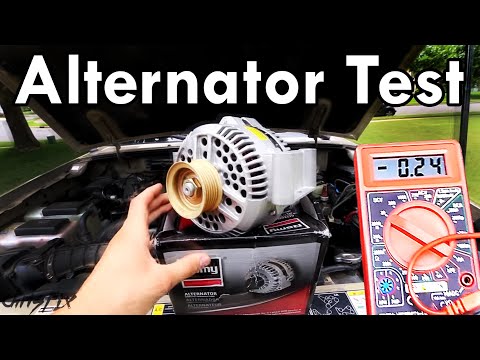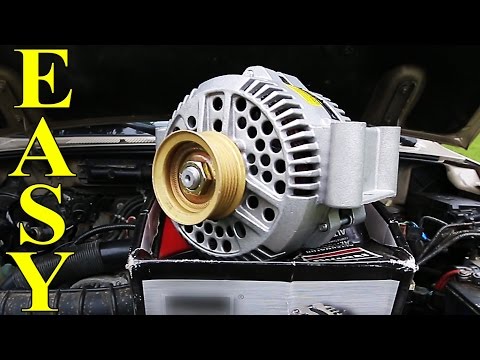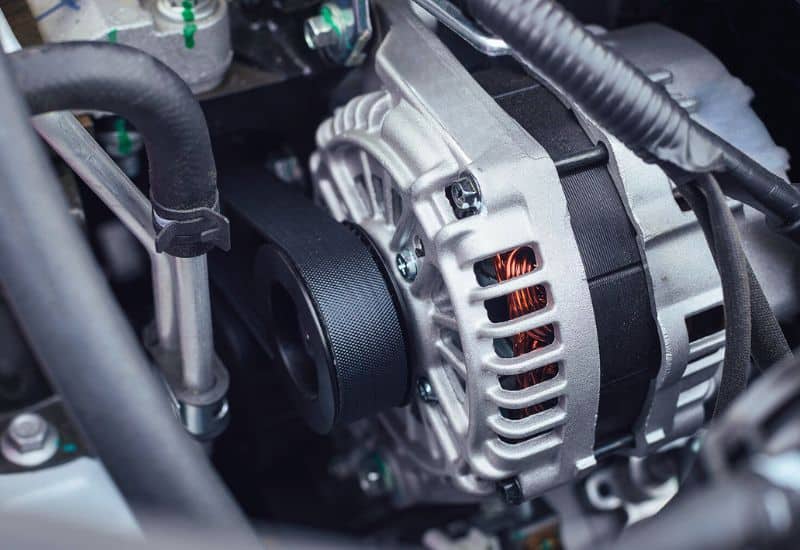
The alternator is literally the beating heart of your car’s electrical system. It’s driven by the serpentine belt, which rotates the alternator’s pulley, causing the rotor and stat inside the alternator which acts as magnets as they rotate to generate electricity. The current is then sent directly to the car’s 12 Volt battery, where it’s stored or distributed to the rest of the vehicle’s electrical system.
This means that any time you have a problem with the alternator, you will also have a problem with the battery. Though it’s entirely possible for the alternator to be going bad, but the battery is completely normal.
Signs of a bad alternator can start out subtle and might be hard to notice if you aren’t paying attention. If you suspect your alternator is going bad, you might be experiencing one or more of the following signs.
1. Squealing Noises When Starting the Car or Accelerating

Squealing noises when you start the engine or accelerate hard are usually a sign of the serpentine belt slipping on something as it starts to rotate under load. If the alternator’s pulley is going out or starting to stick, the belt will just slip right over it rather than rotate it properly.
This will usually leave strange scoring marks on the alternator pulley wheel itself. If you lean in close, you might even get the faint smell of burning rubber.
With the engine turned off, you can try to turn the alternator’s pulley by hand. If it stays seized, or it’s very hard to turn, it means something inside is seized as well. Sometimes, you can lubricate the pulley and get it moving again with a breaker bar, but it will usually seize up shortly.
2. The Engine Is Hard to Start
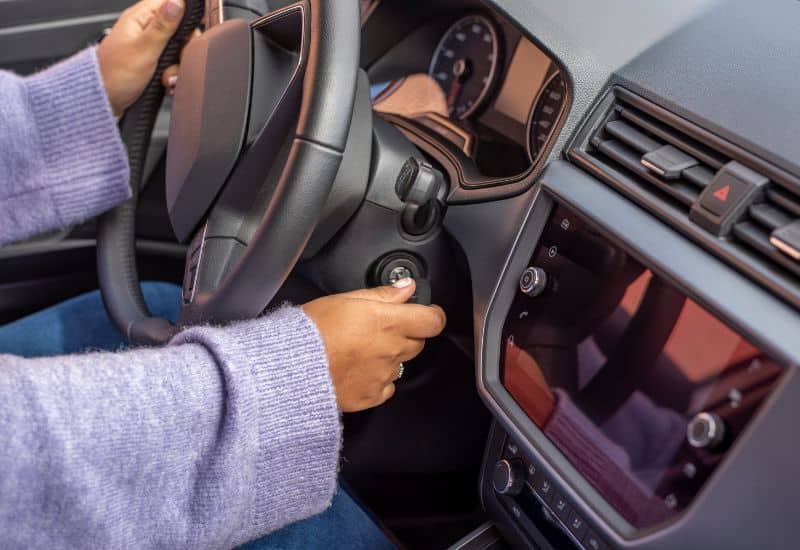
As an alternator starts to go bad it struggles to generate enough current to keep the battery fully charged, making it hard to turn the engine over. The Bendix gear in the starter motor might struggle to rotate the flywheel with enough vigor to get the internal combustion process started. Eventually, a spark and proper compression happen simultaneously, and the engine finally roars to life.
This bad alternator sign is easily misinterpreted as a problem with the battery or starter motor. More than one person has jumped to this conclusion and replaced a perfectly good battery, only to have the hard starting problem rear its ugly head again later.
3. The Lights Seem Dim

Dim headlights and running lights are other common signs of a bad alternator. The alternator itself is probably still delivering a weak charge at this point, but it’s not enough to meet the demands placed on the battery.
If you turn on the headlights when starting the car, you’ll also notice them dip to the point where they’re almost off. Then, they come back to being nearly normal when the engine finally starts.
This diminishing return shows up in the lights and usually happens at the same time as the hard starting problem. It’s a sign that the alternator’s performance is about to step off a cliff.
4. Alternator Whine Coming Through the Speakers
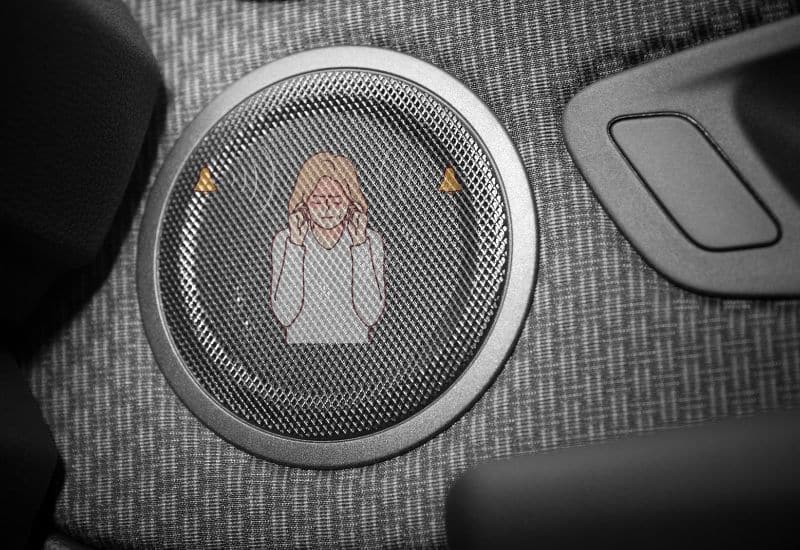
A strange whine coming through the speakers in tune with the alternator can also signify a problem. It’s usually due to a voltage difference, causing an electrical expression of the engine to come through the speakers whether you’re playing music or not.
This can be a sign of a bad alternator or a bad ground connection between the alternator and the engine block. If you follow the ground wire from the alternator to the block and find that it’s loose, try to reconnect it. This might rectify the problem before the insufficient ground damages the alternator itself.
5. Under powered Electrical Accessories
The lack of sufficient charge created by a bad alternator will also leave the electrical accessories under-powered. You might notice the windows and sunroof are slow to open as their electrical motors require a substantial draw. The dashboard display and interior lights might also seem to be browning out or fading even when the engine is running.
6. Burning Rubber Smells

As an alternator continues to die, it can start to build up heat from resistance in the internal wiring, which will start to give off an odor like burning rubber or melted wires. This is one of the latter signs of a bad alternator.
It will be strongest when you open the hood. Though you’ll probably also notice the odor if you get close down to the alternator for a sniff. If the car is running or just recently shut off, you might also feel excess heat coming off the alternator housing.
7. A Whining or Grinding Noise

As the alternator is about to die, you might hear whining or grinding noises coming from inside it. This is usually the internal brushes, bushing, or alternator bearing failing. The excess friction and vibration going on inside the alternator will severely hamper its ability to deliver charge to the battery.
8. A Dead Battery
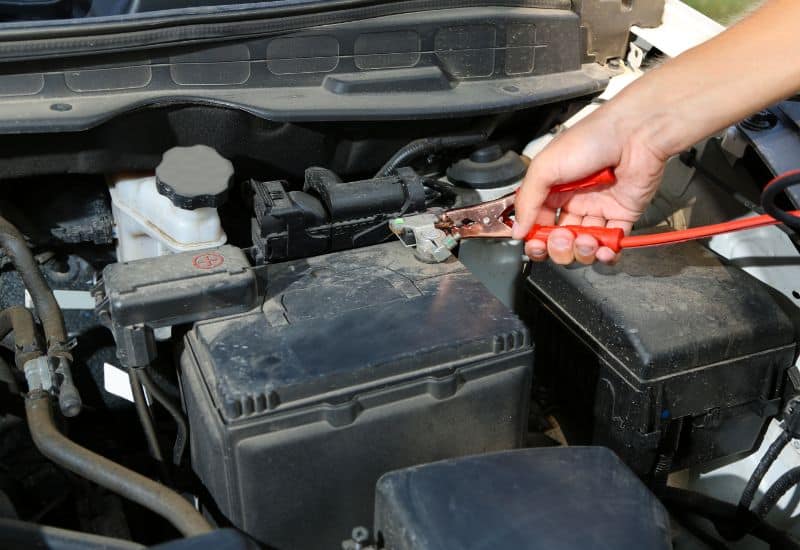
A bad alternator’s rapidly diminishing ability to deliver a charge to the battery will eventually leave it flat. You might be able to jump-start the car, and it will run for a few minutes before dying. This is a strong sign that the alternator itself has completely failed. Though it might also have taken the battery with it.
9. The Red Battery Warning Light Comes On
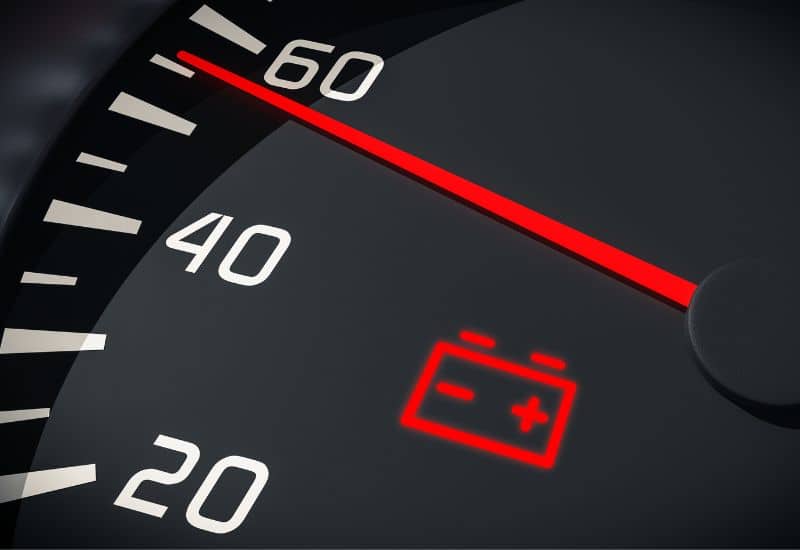
The red battery warning light on the dash display clearly shows that the bad alternator is in its final death throes. You might even be able to hold the brake pedal down and rev the engine enough to get the battery light to turn off. Then, when you let the engine idle, the battery warning light comes on again. At this point, the car is no longer safe to drive and could leave you stranded without warning.
How to Test a Bad Alternator
It can be tough to distinguish between a bad alternator and a bad battery. It’s also possible for both to be malfunctioning at the same time. The most comprehensive way to do this is to test both with a multimeter. If you don’t have one, most auto parts stores will test it for you for free.
Layman’s Alternator Test
If you don’t have a multimeter and you don’t want to risk driving to an auto parts store, you can perform the following layman’s test to help confirm your suspected bad alternator.
If the car stutters or outright stalls and dies, it’s a strong sign that the alternator isn’t strong enough to keep the car running independently. If the engine seems to run poorly, it likely means the alternator has started to fail but hasn’t completely gone bad yet.
If the engine runs like normal, then it likely means the battery is the problem.
Testing a Bad Alternator with a Multimeter

The best way to test if you have a bad alternator or battery is to hook it up to a multimeter or voltmeter with the following steps.
If the battery is still good, it will give you a reading in the neighborhood of 12.6 Volts. Write down the number.
If the reading is higher, around 14 Volts, it means the alternator is charging the battery. If it’s lower, below 10 volts, and dropping, then it means the alternator is not charging the battery, and the remaining voltage is being drained away by providing the spark for the engine and other electrical components.
How to Deal with a Bad Alternator
If your test revealed that you have a bad alternator, you’ll need to choose between having it rebuilt or replaced. It was cheaper to rebuild an alternator in the past, but the part prices have come down in recent years. You can have a mechanic replace your alternator for around $300 in parts and labor, which is the same if they rebuilt it.
Better yet, if you’re a reasonably capable DIY mechanic, you can replace your own alternator for a part cost of around $125 to $150.
Frequently Asked Questions
Can a bad alternator damage my car battery?
A bad alternator that lets the car battery get below 50% or lower can start to damage the internal components, drastically shortening battery life. The longer you let a bad alternator go, the more likely you will also need a new battery.
Can oil on an alternator cause it to go bad?
An accidental drop of oil from the dipstick getting into an alternator can severely foul it. This can affect the performance of the moving parts or foul the electrical components. Sometimes, you can clean the oil from the alternator, but you might need professional repair if it’s more than a few drops.
How long does an alternator last?
A new alternator has an average lifespan of 80,000 to 150,000 miles, translating into roughly seven years. If your alternator has more than 80,000 miles on it, and you’re starting to see signs of it going bad, the wise move is to test it and consider replacing it before it causes more serious electrical problems.
Conclusion
The early signs of a bad alternator can be subtle. An engine that’s hard to start and dimming lights often herald an electrical problem with either the alternator, battery, or both.
As the alternator dies, you might notice electrical accessories like windows and power sunroof being slow to open. You might even start to hear a whining or grinding noise, followed by strange burning rubber odors.
At some point, the bad alternator will deteriorate to the point that it turns on the red battery warning light. This is a sure sign of distress, and you need to stop driving the car before it stalls and leaves you stranded somewhere.
The easiest way to test for a bad alternator is to pull the negative (black) lead from the battery while the engine is running. If the car falters badly or the engine dies, it’s a clear sign that the alternator isn’t charging. You can then confirm the test with a voltmeter or multimeter.

Written By
Jason Farrell
Jason Farrell is a certified master technician, the editor of Mechanic’s Diary in Pittsburgh, Pennsylvania. He is ASE (Automotive Service Excellence) certified and earned a Bachelor’s Degree in Automotive Technology from Pittsburg State University. With nearly 18 prior years of experience in the automotive field, he has extensive knowledge about Domestic, European, and other foreign makes and models of cars and light trucks. Jason’s experience working as a technician and service manager at dealerships, gave him the experience and know-how of most aspects of inspection, diagnosis, and repair from engine and drivability to electrical, HVAC, brakes, steering and suspension and everything in between.


